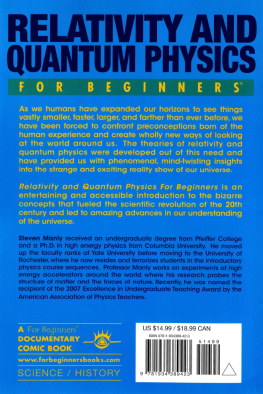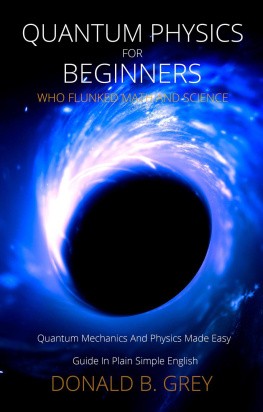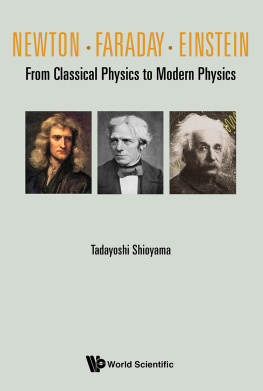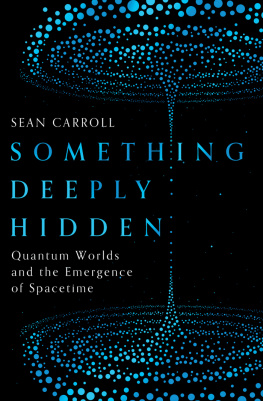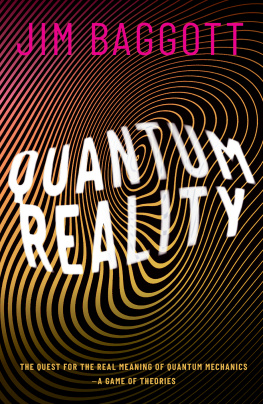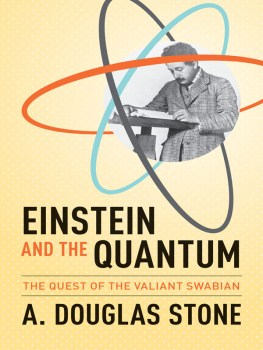Quantum Physics for beginners
A simple guide for discovering the hidden side of reality.
Master the theory of relativity and the mechanics of particles like Einstein | With easy and practical examples!
Table of Contents
Chapter 1
A pleasant surprise
B efore the quantum era, science lived on decisive pronouncements on causes and effects of motions: well defined objects moved along precise trajectories, in response to the action of various forces. But the science that we now call classical, emerged from the mists of a long history and duration until the end of the nineteenth century, overlooked the fact that each object was actually made up of a gigantic number of atoms. In a grain of sand, for example, there are several billion of them.
Before the quantum era, who observed a phenomenon was like an alien from space, who looked at the Earth from above and noticed only the movements of large crowds of thousands and thousands of people. Maybe they saw them marching in compact ranks, or applauding, or hurrying to work, or scattering in the streets. But nothing they observed could ever prepare them for what they would see by focusing their attention on individuals. On an individual level, humans showed behavior that could not be deduced from that of crowds - things like laughter, affection, compassion and creativity. Aliens, perhaps robotic probes or evolved insects, may not have had the right words to describe what they saw when they observed us closely. On the other hand, even we, today, with all the literature and poetry accumulated over the millennia, sometimes we can not fully understand the individual experiences of other human beings.
At the beginning of the 20th century something similar happened. The complex building of physics, with its exact predictions about the behavior of objects, i.e. crowds of atoms, suddenly collapsed. Thanks to new, sophisticated experiments, conducted with great skill, it was possible to study the properties not only of individual atoms, but also of the smaller particles of which they were made. It was like going from listening to an orchestral ensemble to quartets, trios and solo pieces. And the atoms seemed to behave in a disconcerting way in the eyes of the greatest physicists of the time, who were awakening from the sleep of the classical age. They were explorers of an unprecedented world, the equivalent of the poetic, artistic and musical avant-garde of the time. Among them were the most famous: Heinrich Hertz, Ernest Rutherford, J. J. Thomson, Niels Bohr, Marie Curie, Werner Heisenberg, Erwin Schrdinger, Paul Dirac, Louis-Victor de Broglie, Albert Einstein, Max Born, Max Planck and Wolfgang Pauli. The shock they felt after poking around inside the atoms was equal to what the crew of the Enterprise must have experienced when they first encountered an alien civilization found in the vastness of the cosmos. The confusion produced by the examination of the new data slowly stimulated the first, desperate attempts by physicists to restore some order and logic in their science. At the end of the twenties of the last century the fundamental structure of the atom could be said by now known in broad lines, and it could be applied to the chemistry and physics of ordinary matter. Mankind had begun to really understand what was happening in the new, bizarre quantum world.
But while the crew of the Enterprise could always be teleported away from the most hostile worlds, the physicists of the early twentieth century did not go back: they realized that the strange laws they were discovering were fundamental and were the basis of the behavior of all matter in the universe. Since everything, including humans, is made of atoms, it is impossible to escape the consequences of what happens at the atomic level. We have discovered an alien world, and that world is within us!
The shocking consequences of their discoveries upset not a few scientists of the time. A bit like revolutionary ideologies, quantum physics consumed many of its prophets. In this case the ruin did not come from political machinations or conspiracies of adversaries, but from disconcerting and deep philosophical problems that had to do with the idea of reality. When, towards the end of the 1920s, it became clear to everyone that a real revolution had occurred in physics, many of those who had given it the initial impetus, including a figure of the caliber of Albert Einstein, repented and turned their backs on the theory they had contributed significantly to creating. Yet today, well underway in the 21st century, we use quantum physics and apply it to a thousand situations. Thanks to her we have invented for example transistors, lasers, atomic energy and countless other things. Some physicists, even prominent ones, continue to use all their strength to find a version of quantum mechanics softer for our common sense, less destructive than the common idea of reality. But it would be good to reckon with science, not with some palliative.
Before the quantum era, physics had managed very well to describe the phenomena that happen before our eyes, solving problems in a world made of stairs firmly resting on the walls, arrows and cannonballs launched according to precise trajectories, planets orbiting and rotating on themselves, comets returning to the expected time, steam engines doing their useful work, telegraphs and electric motors. In short, at the beginning of the twentieth century almost every observable and measurable macroscopic phenomenon had found a coherent explanation within the so-called classical physics. But the attempt to apply the same laws to the strange microscopic world of atoms proved incredibly difficult, with deep philosophical implications. The theory that seemed to come out, the quantum theory, went completely against common sense.
Our intuition is based on previous experiences, so we can say that even classical science, in this sense, was sometimes counterintuitive, at least for the people of the time. When Galileo discovered the laws of ideal motion in the absence of friction, his ideas were considered extremely daring (in a world where no one or almost no one had thought to neglect the effects of friction).2 But the classical physics that emerged from his intuitions managed to redefine common sense for three centuries, until the 20th century. It seemed a solid theory, resistant to radical changes - until quantum physics burst onto the scene, leading to an existential shock like never before.
To really understand the behavior of atoms, to create a theory that would agree with the seemingly contradictory data that came out of the laboratories in the thirty years between 1900 and 1930, it was necessary to act in a radical way, with a new audacity. The equations, which until then calculated with precision the dynamics of events, became tools to obtain fans of possibilities, each of which could happen with a given probability. Newton's laws, with their certainties (so we speak of "classical determinism") were replaced by Schrdinger's equations and Heisenberg's disconcerting mathematical constructions, which spoke the language of indeterminacy and nuance.
How does this uncertainty manifest itself in nature, at the atomic level? In various areas, of which here we can give a first, simple example. Atomic physics tells us that given a certain amount of radioactive material, let's say uranium, half will transform thanks to a process called "decay" and will disappear before a fixed period of time, called "half-life" or "half-life". After another time interval equal to the half-life, the remaining atoms will be reduced another time by half (so after a time as long as two half-lives the amount of uranium present at the beginning will be reduced to a quarter of the original; after three half-lives, to an eighth; and so on). Thanks to quantum mechanics and some complicated equations, we are able to calculate in principle the value of the half-life of uranium, and of many other fundamental particles. We can put at work arrays of theoretical physicists and get many interesting results. Yet, we are absolutely not able to predict when a certain uranium atom will decay.


